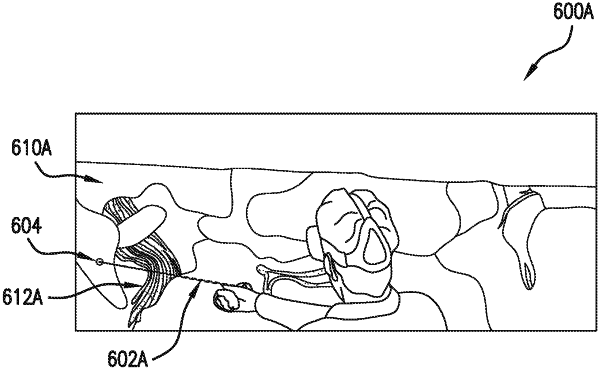| CPC G01V 20/00 (2024.01) [G06T 15/08 (2013.01); G06T 19/00 (2013.01); G06T 2210/36 (2013.01)] | 20 Claims |

|
1. A computer-implemented method of visualizing subterranean fluid flows in a virtual environment, the method comprising:
obtaining, by a computing device from an imaging device communicatively coupled to the computing device, a digital volume image representing a reservoir formation sample, the digital volume image including a plurality of volume elements corresponding to different points within the reservoir formation sample, each volume element having image properties representing at least one of a pore space or a rock matrix at a corresponding point within the reservoir formation sample;
segmenting, by the computing device, the digital volume image by assigning hydraulic properties of the reservoir formation sample to each volume element in the plurality of volume elements, based on the image properties associated with that volume element;
simulating a flow of reservoir fluids through the pore space within the rock matrix of the reservoir formation sample, based on the segmented digital volume image;
generating a vector field representing a distribution of flow properties of the reservoir fluids along one or more flow lines through the pore space, based on the simulation;
providing, via a virtual reality (VR) display coupled to the computing device, an interactive visualization of a three-dimensional (3D) virtual environment comprising one or more flow lines as a heat map, wherein the heat map connects corresponding points of the pore space of the reservoir formation sample;
receiving, via a user input device coupled to the computing device, user input specifying an area of the 3D virtual environment to be rendered at a selected level of detail within a current view of the interactive visualization;
rendering, by the computing device via the VR display, the specified area of the 3D virtual environment at the selected level of detail; and
updating, by the computing device, the current view of the interactive visualization of the 3D virtual environment as rendered within the VR display.
|